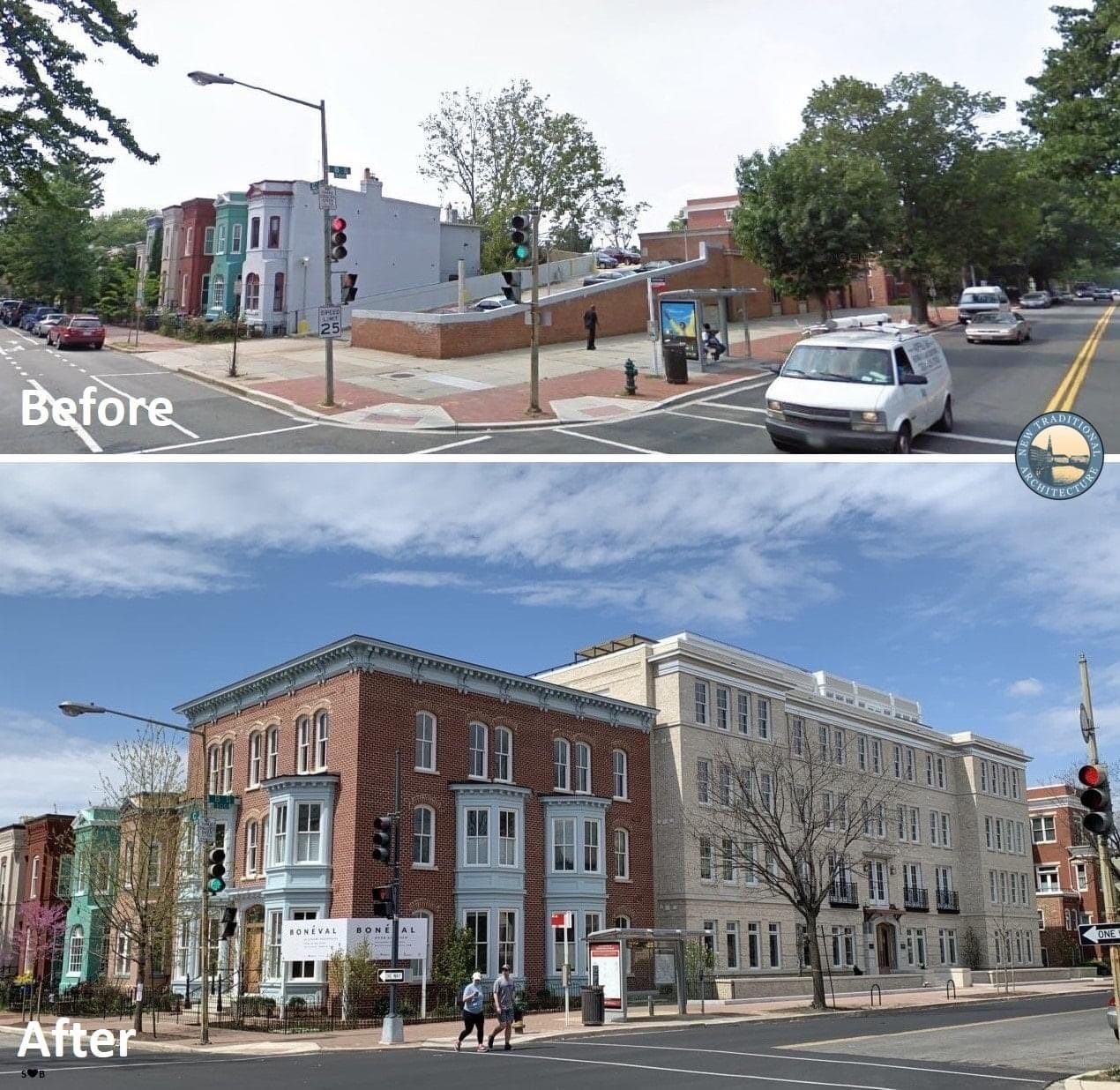We’re on a roll. Four straight weeks of 3-2-1 from Brick + Mortar, focused on real estate development and creating great places.
3 things from others
2 things from me
1 picture
Let’s celebrate with a share!
3 THINGS FROM OTHERS
I.
Last week, I vented about parking minimums. Well, what happens when you actually get rid of them?
The City of Buffalo, NY did just that back in 2017 despite the classic retort of: “This isn’t [insert big city]. People drive here.” But is that actually rooted in any fact-base?
Turns out—not really.
In aggregate, the 36 developments studied since the elimination of parking minimums built 21% less parking spaces than what was previously mandated. 53% less for mixed-use developments!
The proof is in the pudding. Developers are incentivized to build what the market wants—no more, no less. We should be putting the onus on them to assess the market without the burden of arbitrary top-down regulation.
Article: What Happens When You Eliminate Parking Minimums? Lessons From Buffalo
II.
Another shining light for community-oriented real estate development to add to the list alongside Greg O’Connell. Meet Jason Duff, who seized the initiative in his struggling community of Bellefontaine, Ohio and turned a drab backwater into a tourist attraction.
Now he is taking his approach to other struggling communities around the Midwest with his enterprise Small Nation. To date, Small Nation has bought and renovated more than 50 buildings in Bellefontaine alone, with nearly $30 million in private investment.
He’s even started Small B* School—a training center where small businesses and small towns can learn how to start, revive, grow and thrive.
What a legend.
Article: Big Ideas for Small-Town Revival
(PS - thanks, Rob, for the link!)
III.
Spruce 2x4x8s are down to $7.89 from a high of $13.75 last month at the local lumber yard. Boding well for our upcoming 9-unit stick-built construction project!
2 THINGS FROM ME
I.
Getting a loan commitment from a lender is one of the less glamorous hurdles to overcome in the real estate development world. And that hurdle can be a bit further off the ground if you’re just getting started. Who would have thought, right?
Regardless, it’s still a critical step. You can’t really build much if you don’t have any money.
I’m currently tackling my biggest debt financing raise to date— a $650,000 construction loan on a $1M project—and there are a few techniques I’ve used to help build trust with prospective lenders despite being new to the game:
Have a solid pitch deck. First impressions matter. Don’t ruin it by sharing a complex proforma out of the gate. Instead, tell a compelling story that shows you’ve done your homework and are fully invested in the project. Here is my pitch deck.
Maintain a Personal Financial Statement (PFS) and Schedule of Real Estate Owned (SREO). Banks have their own clunky templates that are all different and tend to limit what you can share. It’s a good idea to have your own versions that are up-to-date and readily available. Here are my PFS and SREO templates.
Keep building your bio and resume. When lenders go to committee for approval, your personal story and professional credentials matter. Especially when working with smaller portfolio lenders. Resume.io is a great resource for this.
Back up your assumptions and construction budget. You’ll likely get some questions that try to poke holes in your project. Know what the demand for your product looks like in your area, document a comparable analysis for rents, establish relationships with contractors and bid out the work (we got to 100+ lines of detail when building our construction budget). If you’re not confident in the numbers, why should anyone else be?
II.
We had a big win last week on the other end of the capital stack and were awarded $86,000 in state tax credits.
Specifically, these tax credits are allocated to projects in designated downtowns. And priority goes to those that have high community impact and rehabilitate existing structures.
As a for-profit developer, there are limited incentives to develop smaller infill projects within village centers. And, given where construction costs are currently sitting, it’s no wonder there isn’t much activity in smaller towns. The numbers so often just don’t pencil out.
These subsidies, while relatively small, make a material impact on the economics of doing high-quality incremental development (almost 9% of our project cost). Especially in a town that does not have a municipal waste system and where the responsibility of septic installation falls on the developer.
In fact, this award was key in our go/no-go decision to move forward. Multiple rounds of pricing show us coming in around $250 psf. And that’s best case scenario with us leveraging the existing foundation and 1st-floor framing.
1 PICTURE
I.
Great example of what good infill development looks like.
Hint: this is Missing Middle Housing.
📍 Washington, DC
That’s it for today. Thanks for reading. If you haven’t yet, go ahead and subscribe here:
About me: I’m Jonah Richard, ex-Accenture Consulting and Columbia Engineering alum. I’m currently building Village Ventures LLC, a real estate development and investment company focused on creating great places.
Follow me on Twitter for more things related to real estate development and creating great places.






